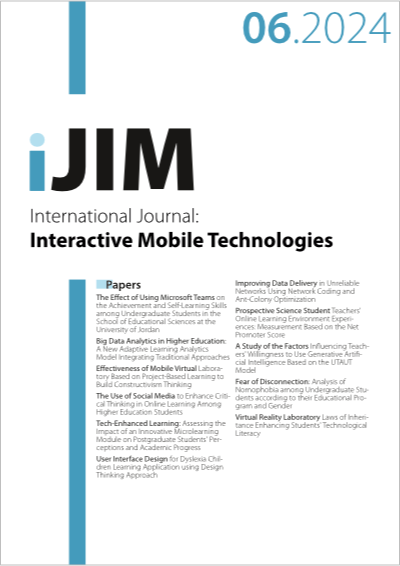User Interface Design for Dyslexia Children Learning Application using Design Thinking Approach
DOI:
https://doi.org/10.3991/ijim.v18i06.47973Keywords:
User Interface Design, Dyslexia Children, Learning Application, Design Thinking ApproachAbstract
The ability to read and count is essential to be mastered by every student to foster future academic and professional success. However, students with dyslexia have limited ability to read and count. Using learning apps can help children with dyslexia develop reading and counting skills. User interface design is an essential aspect of application development. The research aims to develop a user interface design for learning applications for dyslexic children. User interface design development methods use design thinking approaches that have levels of empathy, define, ideate, prototype, and test. The development of user interface design of learning applications also involves gamification and multi-sensory to help improve students’ understanding of dyslexia when using applications. Evaluation of user interface design using the System Usability Scale (SUS) method yields a total average value of 82. This shows that the user interface design of learning applications for students with dyslexia is acceptable and suitable for users.
Downloads
Published
How to Cite
Issue
Section
License
Copyright (c) 2024 Denis Cahyani, Sapti Wahyuningsih, Desi Rahmadani, Khusnul Khotimah, Noor Azean Atan

This work is licensed under a Creative Commons Attribution 4.0 International License.



